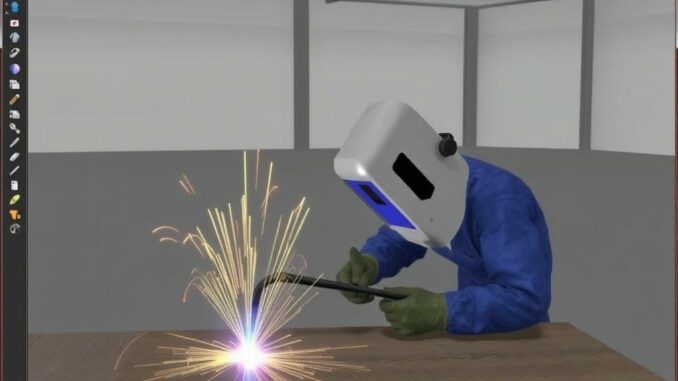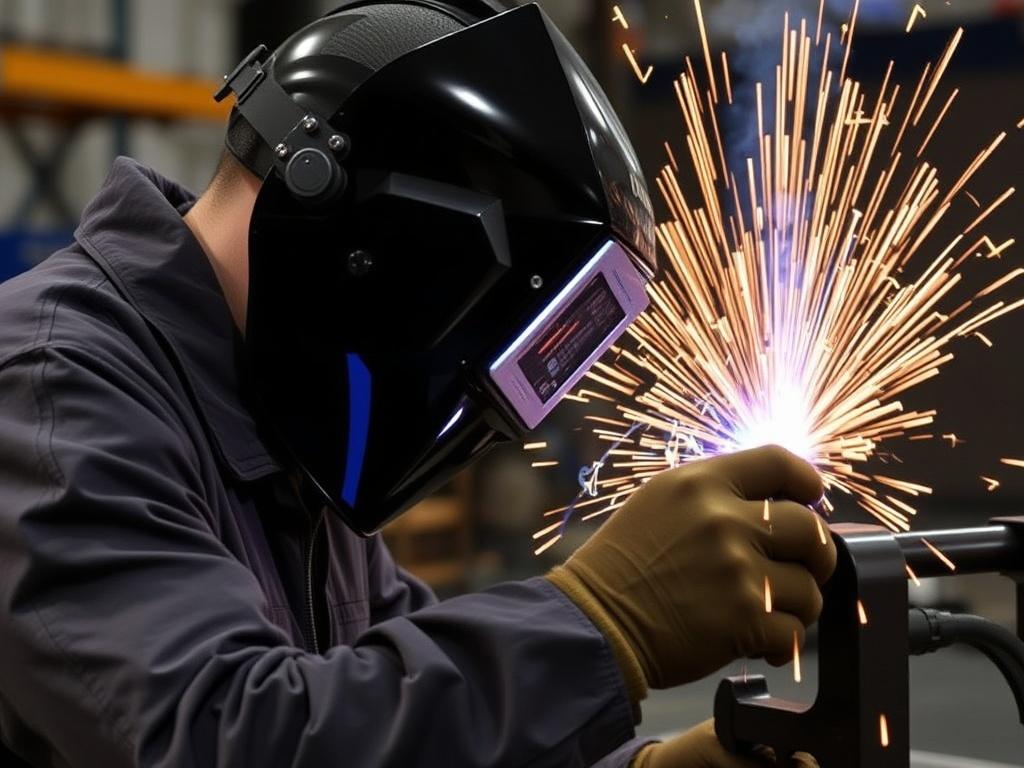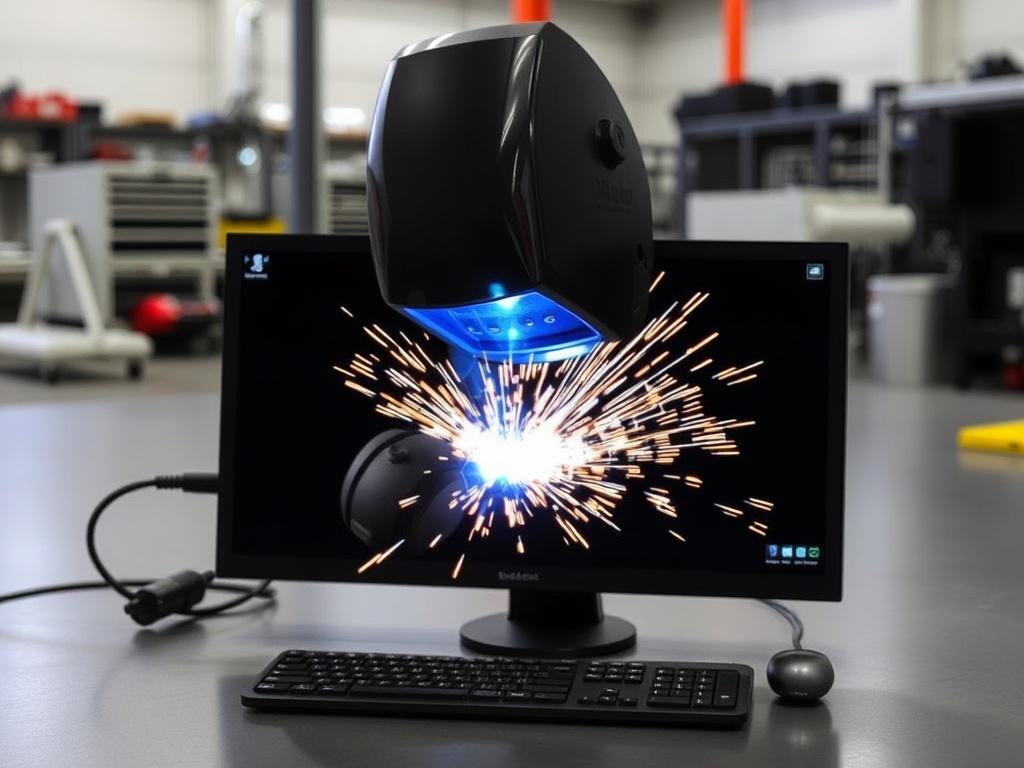
In today’s fast-evolving industrial landscape, welding remains a fundamental skill, deeply embedded in sectors ranging from automotive and aerospace to construction and manufacturing. However, the traditional approach to learning welding—complete with high heat, dangerous sparks, and costly materials—poses significant challenges for both novices and instructors. Enter welding simulation software, a revolutionary tool that is changing how welding training is delivered. This technology offers a safe, cost-effective, and highly interactive way to hone welding skills without ever touching a torch or dealing with molten metal.
In this comprehensive article, we will explore welding simulation software in depth. From understanding what welding simulation is, to examining its features and benefits, and even looking at real-world applications, this article seeks to fully disclose how this technology is transforming welding education. With a conversational and approachable style, we’ll also cover the different types of simulators, the technology behind them, and how they integrate into modern training environments. Whether you’re an apprentice, an educator, or simply curious about the future of industrial training, this guide will provide valuable insight into training without sparks.
What Is Welding Simulation Software?
Welding simulation software refers to computer-based programs that mimic the welding environment and process through virtual reality, augmented reality, or sophisticated computer graphics. Unlike traditional hands-on welding training, where trainees physically manipulate welding equipment and materials, welding simulation software allows users to practice techniques through a virtual interface. This means learners can experiment, make mistakes, and perfect their skills in a risk-free environment.
The software typically employs advanced sensors and haptic feedback devices, which recreate the feeling of handling a welding torch, adjusting angles, controlling speed, and maintaining proper welding posture. This immersive experience helps welders develop muscle memory and technical competence without the dangers of harmful fumes, burns, or costly materials.
At its core, welding simulation software is designed not only to teach the technical steps but also to enhance cognitive understanding of welding principles such as heat control, bead formation, and joint fit-up through a responsive and dynamic learning interface.
Key Components of Welding Simulation Software
- Virtual Welding Environment: A digital workspace where welding takes place, designed to accurately reproduce different welding techniques such as MIG, TIG, Stick, and Flux-cored welding.
- Haptic Feedback Devices: Hardware components—often resembling actual welding torches—that provide realistic resistance and vibrations to simulate the feel of welding.
- Performance Metrics and Feedback: Integrated tools that monitor the trainee’s technique in real-time, offering feedback on parameters like torch angle, speed, and heat input.
- Interactive Tutorials and Scenarios: Guided lessons and complex welding exercises that allow learners to progress from basic skills to advanced concepts.
- Data Tracking and Reporting: Analytics to track improvement over time, allowing instructors to tailor teaching approaches.
Understanding these components helps appreciate the sophistication behind welding simulation software and how it brings real-world training into a digital format that is both efficient and effective.
Why Use Welding Simulation Software for Training?
Traditionally, welding is learned through direct, hands-on experience, which requires expensive materials, dedicated workspace, and protective gear. While effective, this approach has some intrinsic drawbacks—it can be dangerous, time-consuming, and financially demanding. Welding simulation software addresses these concerns strategically.
Let’s explore the key reasons why welding simulation software is becoming increasingly popular within technical education and industrial training environments.
Safety First – No Sparks, No Risk
The most compelling reason to use simulation software is safety. Welding involves extreme heat, intense ultraviolet light, and hazardous fumes. For beginners, the risk of burns or eye damage—especially during initial practice—is significant. Welding simulation software eliminates these physical risks entirely. Learners can focus on technique without fear of injury, encouraging experimentation and reducing anxiety associated with the learning curve.
Cost-Effective and Environmentally Friendly
Using real welding consumables—such as electrodes, shielding gases, and metal plates—can become expensive, especially during the trial-and-error phase of learning. Welding simulation eliminates the recurring costs of materials and disposal while reducing the carbon footprint associated with physical waste and energy consumption. This is particularly beneficial for educational institutions and companies managing tight budgets.
Accelerated Skill Development Through Instant Feedback
One of the notable features of welding simulation software is the instant, detailed feedback it provides. Unlike waiting for an instructor to inspect a physical weld, simulation programs analyze numerous aspects of a trainee’s weld in real time. Factors such as torch angle, travel speed, and weld bead characteristics are monitored and reported immediately. This real-time analysis accelerates learning and helps develop precision with efficiency that traditional methods struggle to match.
Flexibility and Accessibility
Simulation software allows learners to train anytime, anywhere, especially when paired with portable devices. This flexibility means students can practice outside the confines of a welding lab, fostering more consistent practice habits. For remote or underserved regions, welding simulation software democratizes access to quality training.
Customizable Training Scenarios
Whether you are learning basic lap joints or tackling complex pipe welding procedures, welding simulation software adapts to various skill levels and training goals. Instructors can create customized scenarios that align exactly with curriculum standards or workplace requirements, providing a personalized training experience.
Types of Welding Simulation Software
Like any technology, welding simulation software exists in various forms tailored to different needs and budgets. Understanding the main types helps you choose the right tool or appreciate what options are available.
Virtual Reality (VR) Welding Simulators
VR welding simulators immerse users in fully three-dimensional environments, often utilizing VR headsets and specialized hand controllers that mimic welding torches. These simulators provide the highest level of immersion and tactile feedback, offering a very realistic training experience. Users can move around welded objects, observe welds from different angles, and even simulate environmental conditions such as wind or limited visibility.
Augmented Reality (AR) Welding Simulators
AR welding simulators overlay virtual welding elements onto the real-world environment using AR glasses or mobile devices. This hybrid approach lets trainees handle physical tools while interacting with virtual feedback and guides, blending reality and simulation for a practical training experience.
Desktop Welding Simulators
These systems usually involve a specialized welding torch connected to a software running on a standard computer or laptop. They are less immersive than VR versions but still offer valuable real-time feedback on welding technique. They are more affordable and widely used in educational settings where budget constraints exist.
Comparison Table: VR vs AR vs Desktop Welding Simulators
| Type | Immersion Level | Hardware Requirements | Cost | Best Use Case |
|---|---|---|---|---|
| Virtual Reality (VR) | High | VR headset, specialized controllers | High | Advanced, detailed training in specialized centers |
| Augmented Reality (AR) | Moderate to High | AR glasses or mobile devices | Moderate | Blended environment training, integrating actual tools |
| Desktop Simulators | Moderate | Standard PC/laptop, basic sensor-equipped torch | Low to Moderate | Entry-level training, classrooms, and workshops |
How Does Welding Simulation Software Work?

Understanding the technology behind welding simulation software uncovers how it can so effectively replicate the complex art of welding. The magic lies in combining precise tracking hardware, state-of-the-art software algorithms, and intelligent feedback systems to create an interactive learning environment.
Tracking and Sensors
The simulation hardware includes sensors embedded in the welding torch and other equipment that track movements, angles, position, and pressure. These sensors relay data to the software, which analyzes this information in real time to simulate the weld pool behavior and bead formation.
Physics-Based Rendering
The software simulates the physical properties of welding, including heat transfer, metal melting, gas shielding, and slag formation. This physics-based approach helps trainees visualize the effects of different welding parameters immediately. For example, moving the torch too quickly or ignoring angle guidelines dynamically alters the weld quality within the simulation.
Visual and Haptic Feedback
Realistic graphics show detailed visual effects such as sparks, molten metal, and smoke. Complementing the visuals, haptic feedback devices provide tactile sensations mimicking vibrations and resistance users would feel during actual welding. Together, these sensory cues help build muscle memory and improve technique faster.
Performance Analysis and Scoring
One of the biggest benefits is the sophisticated scoring systems that analyze every aspect of the user’s weld. Scores on torch angle, travel speed, heat input, and joint alignment help learners understand their weaknesses and track improvement. This gamified element also keeps users motivated and engaged.
Benefits of Welding Simulation Software in Education and Industry
Implementation of welding simulation software impacts learners and organizations positively, and its growing adoption is a testament to these advantages.
For Students and Trainees
- Reduced Learning Curve: Simulation allows repeated practice without penalty, helping learners build confidence quickly.
- Skill Mastery: Trainees receive objective, instantaneous feedback and can focus on weak spots effectively.
- Stress-Free Environment: No fear of injury or equipment damage means trainees can focus entirely on mastering the craft.
For Educators and Trainers
- Efficient Classroom Management: Ability to monitor multiple students’ performance digitally enables more personalized instruction.
- Curriculum Integration: Customizable modules assist in aligning training to certification and industry standards.
- Reduced Material Costs: Saves educational budgets by minimizing consumable use in practice sessions.
For Industry and Employers
- Better-Prepared Workforce: Employees entering the job site have refined skills, reducing scrap, rework, and risk on the line.
- Training Flexibility: Supports onboarding and continuous education without disrupting production schedules.
- Data-Driven Hiring and Training: Objective skill assessments help identify talent and training needs precisely.
Challenges and Limitations of Welding Simulation Software
While welding simulation software offers many advantages, it’s important to acknowledge its limitations to maintain realistic expectations.
Initial Investment Costs
High-fidelity VR simulators can be expensive, requiring significant upfront capital and specialized hardware. This can be a barrier for smaller educational institutions or companies with limited resources.
Limited Physical Experience
Despite haptic feedback and immersive visuals, some aspects of the physical welding experience, such as dealing with hot metal texture, weight, or notch effects, cannot yet be perfectly simulated. Consequently, simulations supplement but do not fully replace hands-on welding.
Technology Adaptation and User Learning Curve
New users sometimes face difficulties acclimating to simulation platforms, especially older trainees unfamiliar with digital interfaces. Proper instructor training and user support are essential for maximizing benefits.
Software and Hardware Updates
Keeping simulation software and hardware up to date ensures the best training quality but requires ongoing maintenance and investment.
Future Trends in Welding Simulation
The rapid advancement of technology continuously pushes the boundaries of what welding simulation software can achieve. Let’s look at the exciting future trends shaping welding education:
Enhanced Artificial Intelligence
Artificial intelligence integration aims to provide even more detailed, adaptive feedback, customizing training plans to individual learning styles and proficiencies. AI could simulate complex welding defects and troubleshooting scenarios to better prepare users.
Remote Training and Cloud-Based Platforms
The rise of cloud computing opens the door to remote welding simulation training, where learners can log in and train from anywhere while instructors oversee progress online. This democratizes access and provides greater flexibility.
Improved Haptics and Multisensory Feedback
Advances in haptics technology will deliver increasingly nuanced tactile responses, closely mimicking the physical sensations of welding rods, wire feed, and joint edges, thereby enhancing realism.
Integration with Industry 4.0 and IoT
Welding simulation software may soon integrate with broader Industry 4.0 platforms, collecting data from actual manufacturing processes to tailor simulations according to real-world equipment and standards.
Choosing the Right Welding Simulation Software
With many options available, selecting the right welding simulation software depends on your specific needs, budget, and training goals. Here are some key criteria to consider when making your choice:
Define Training Objectives
Are you training beginners or advanced welders? Is the goal fundamental skill development or certification preparation? Clear objectives help narrow down suitable software capabilities.
Evaluate Hardware Requirements
Consider the available space, compatibility with existing computer systems, and user-friendliness of the hardware.
Software Features
- Variety of welding processes supported (MIG, TIG, Stick, etc.)
- Detailed feedback and scoring mechanisms
- Customization and course-building ability
- Reporting and analytics tools
Budget and Support Services
Include not just initial costs but also maintenance, upgrades, and training support in your budget planning. Reliable customer service is critical for smooth adoption and ongoing success.
Case Studies: Welding Simulation Software in Action
To bring life to the concepts discussed, here are real-world examples of where welding simulation software is making headlines:
Example 1: Technical Colleges Leveraging Desktop Simulators
Several community colleges across the United States utilize desktop simulators to complement hands-on welding classes. Students appreciate the option to practice complex welds multiple times with clear, immediate feedback, leading to higher pass rates in welding certifications.
Example 2: Aerospace Industry Training Programs
Leading aerospace manufacturers have integrated VR welding simulators into their onboarding process. This not only enhances safety but also reduces the time needed to achieve qualification for critical welds on aircraft components.
Example 3: Remote Training for Offshore Oil Welders
Firms in the oil and gas sector use portable AR welding simulators to train offshore welders in remote environments, reducing travel costs and ensuring consistent training standards despite geographic challenges.
Summary: Welding Simulation Software—A Spark-Free Future for Welding Training

Welding simulation software is much more than a digital novelty—it is a transformative approach reshaping how welding skills are taught and mastered. By blending safety, cost-efficiency, interactivity, and data-driven insights, this technology empowers learners and educators alike to redefine what is possible in welding training.
While not a complete replacement for real-world experience, welding simulation software acts as a powerful complement, accelerating learning curves, reducing risks, and making welding education more accessible than ever before. As technology progresses, these virtual environments will only become more immersive, intelligent, and invaluable.
Whether you’re stepping into a welding classroom for the first time or managing workforce development for a global industry, considering welding simulation software can ignite new potential without a single spark.
